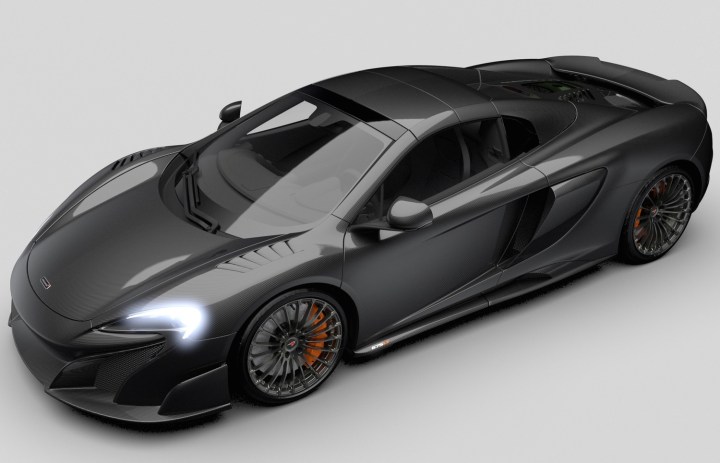
Inspired by customer reactions to the P1 hybrid supercar with exposed carbon bodywork McLaren displayed at the 2016 Geneva Motor Show, the MSO Carbon Series LT also adds more carbon fiber to the 675LT Spider. Just 25 copies will be made, and all are already sold out. That’s in addition to the 500 “standard” 675LT Spiders McLaren previously committed to producing (those are sold out too).
So how much carbon are we talking about here? As in the 675LT Spider, the front bumper, side skirts, side air intakes, rear lower fascia, rear deck, rear bumper and diffuser, and the air-brake spoiler are all carbon fiber. The MSO Carbon Series LT also sports a carbon retractable hardtop and tonneau, A-pillars, hood, “side blades,” front and rear fenders, and the fuel filler cap. McLaren says the MSO Carbon Series LT has 40 percent more carbon fiber parts than the car it’s based on, although it wouldn’t say if the additions create any significant weight savings.
Read more: 2016 McLaren 675LT review
In addition to the extra carbon fiber, the MSO Carbon Series LT is distinguished by louvers in its front fenders inspired by McLaren’s 650S GT3 race car. The limited-edition model also comes standard with the Track Telemetry package, which includes three cameras for capturing on-track action.
There are no mechanical changes, so the MSO Carbon Series LT still boasts the same 3.8-liter twin-turbocharged V8 used in every other current McLaren production car, tuned to the same 666 horsepower and 516 pound-feet of torque as other 675LT variants. Like the 675LT Spider, McLaren says the Carbon Series will do 0 to 62 mph in 2.9 seconds, and reach a top speed of 203 mph.
Pricing is somewhat irrelevant, given that every car is already spoken for. Buyers who previously placed orders for the “standard” 675LT Spider can’t upgrade their cars to Carbon Series spec either because, McLaren says, the latter is so different from the 675LT. Production of the MSO Carbon Series LT will begin this fall, with deliveries before the end of 2016.
Editors' Recommendations
- Bowers & Wilkins and McLaren launch special-edition Px8 headphones
- McLaren applies F1 tech to health care, air-traffic control, Wi-Fi, and athletics
- This electric mini McLaren will ensure your kid has a cooler ride than you
- McLaren’s next supercar will focus on comfort as well as performance


